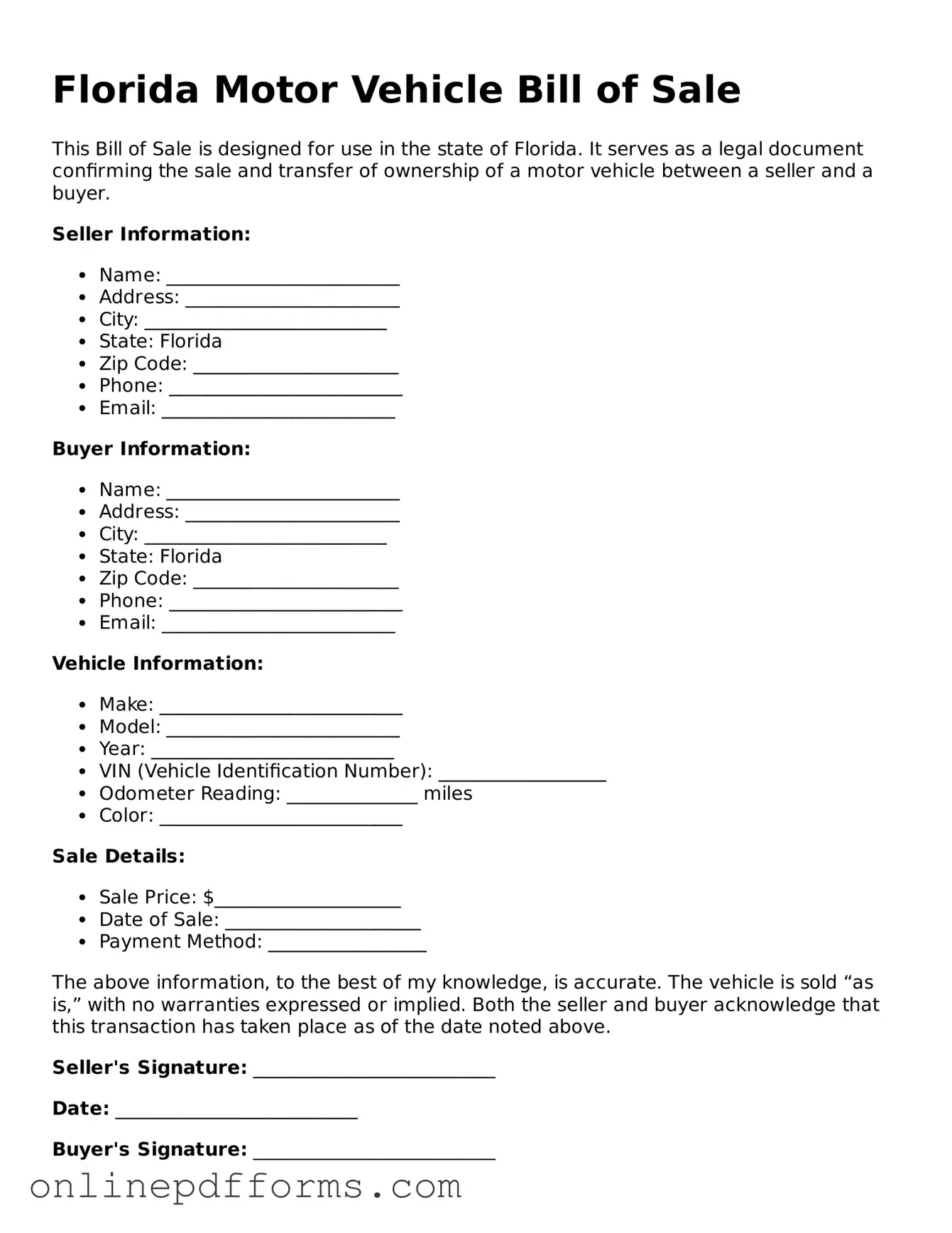Steps to Filling Out Florida Motor Vehicle Bill of Sale
Once you have the Florida Motor Vehicle Bill of Sale form in hand, it's time to fill it out accurately. This document is essential for recording the sale of a vehicle and ensuring that both the buyer and seller are protected. Follow these steps carefully to complete the form correctly.
- Obtain the Form: Download the Florida Motor Vehicle Bill of Sale form from a reliable source or acquire a physical copy from a local DMV office.
- Fill in the Seller's Information: Enter the full name, address, and contact details of the seller. Make sure this information is clear and accurate.
- Fill in the Buyer's Information: Provide the full name, address, and contact details of the buyer. Double-check for accuracy.
- Describe the Vehicle: Include the make, model, year, color, and Vehicle Identification Number (VIN) of the vehicle being sold. This information is crucial for identification.
- Indicate the Sale Price: Write down the agreed-upon sale price for the vehicle. Be clear and precise.
- Include the Date of Sale: Enter the date when the transaction takes place. This is important for record-keeping.
- Signatures: Both the seller and buyer must sign the form. This signifies that both parties agree to the terms outlined in the document.
- Notarization (if required): Depending on the situation, you may need to have the document notarized. Check local requirements to see if this step is necessary.
After filling out the form, keep a copy for your records. The buyer will need the original document for registration purposes. Make sure all information is correct to avoid any issues down the line.
